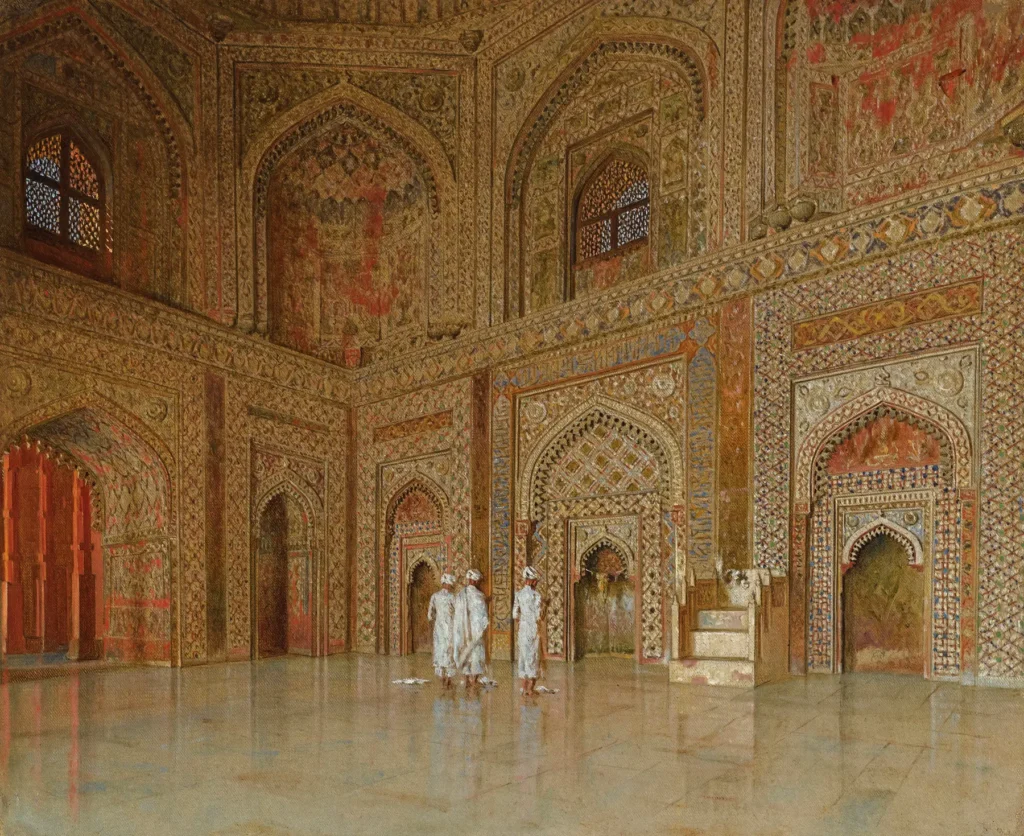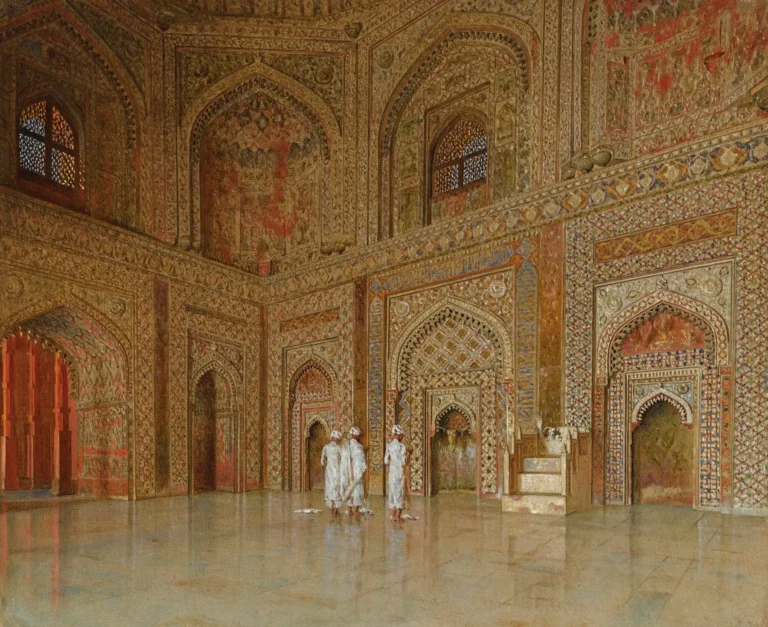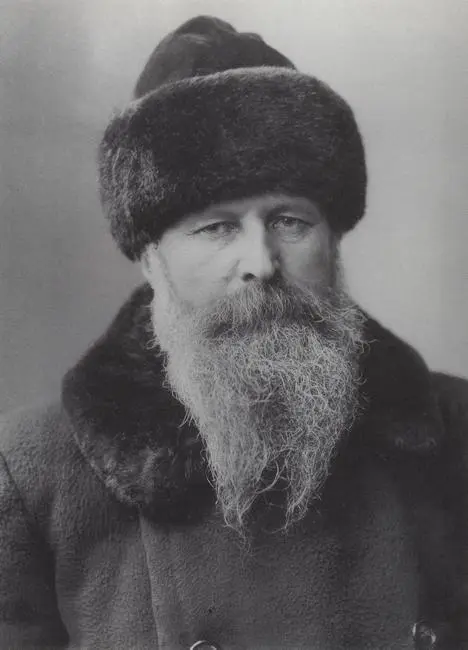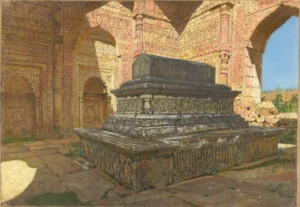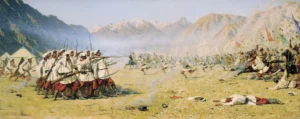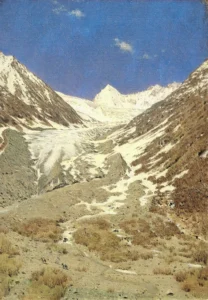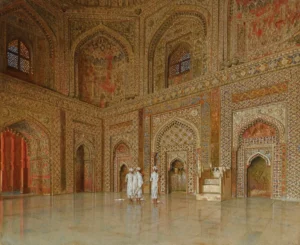The Chief Mosque In Futtehpore Sikri (1880)
Vasily Vereshchagin’s The Chief Mosque In Futtehpore Sikri offers an intricate portrayal of the interior of this renowned mosque in India, spotlighting the grandeur typical of Mughal architecture. Painted in 1880, it reflects Vereshchagin's dedication to realism and his ability to capture the essence of historical sites. The artwork not only showcases architectural beauty but also immerses viewers in the cultural richness of the Mughal Empire during the reign of Akbar.
Year 1880
About the Artwork
The creation of The Chief Mosque In Futtehpore Sikri is intertwined with the storied history of Fatehpur Sikri, which served as the Mughal capital during the late 16th century under Emperor Akbar. Vereshchagin, known for his historical themes, traveled extensively and documented various cultures through his art. His depiction of the mosque focuses on the intricate architectural details, vibrant colors, and the spiritual ambiance surrounding this historic site. This painting not only reflects his artistic prowess but also serves as a cultural commentary on the significant role of Islamic architecture in India.
Did You Know
Vasily Vereshchagin was one of the first artists to break the mold of traditional war art, striving to capture the realities of conflict beyond glorification. His works often addressed the human cost of war, making significant societal statements.
Fatehpur Sikri served as the short-lived capital of the Mughal Empire and was constructed in the late 16th century. Its blend of Persian, Indian, and Islamic architectural styles reflects the diversity of the empire during Akbar’s reign.
Vereshchagin’s commitment to realism influenced many artists after him. His attention to detail and cultural specificity not only provided viewers with a feast for the eyes but also deepened appreciation for the historical narratives depicted in his paintings.




